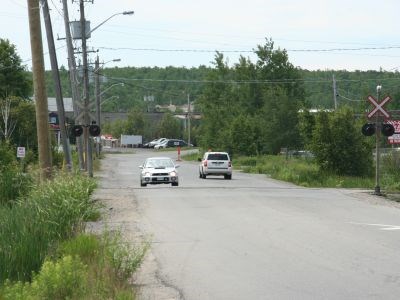Frustrated by a lack of return on the millions they have spent, some city councillors say it’s time to rethink their approach to developing industrial lands.
Meeting April 16, members of the finance committee were given an update on how much the city has gotten back in development charges – known as Section 391 charges — from infrastructure investments they made in different areas of the city. The goal is to recover the costs over 20 years, with interest.
The city hopes to recover $4 million of the total cost of the rock sewer tunnel in the South End, which was completed in 2006. But it has only collected $689,000, and when interest charges are included, the amount the city still has to collect stands at $4,555,000.
Watermain upgrades in Azilda, near the Lionel E. Lalonde Centre, cost a little more than $100,000 in 2006, and the city aimed to recover the full cost. But the city has yet to get any money back and, with interest, the amount to be recovered now stands at almost $140,000.
And on The Kingsway, more than $2 million spent upgrading industrial lands in 2007 has attracted just $6,626 in development charges. With interest, the city still hopes to collect $2.7 million.
Ward 12 Coun. Joscelyne Landry-Altmann asked city staff what could be done to improve and accelerate the rate of return.
“Here are the results of investments the city has made, with the returns being minimal,” Landry-Altmann said. “Is there anything that can be done to expedite the return on investment?”
Lorella Hayes, the city’s chief financial officer, said there was no way for the municipality to compel businesses to invest in those areas, but that doesn’t mean investment won’t happen eventually.
“We will continue to have this charge in place to cover the city’s costs, including interest on the balance, until the full balance is recovered,” Hayes said. “Eventually, the city will collect its funds. It might just take a little longer than anticipated.
“The original time period was 20 years, and we’re behind that schedule. But if it takes 40 years, (the development charges) will remain in place until the funds are collected.”
The issue of investing in infrastructure upgrades in Greater Sudbury’s industrial parks came to a head last year, when business owners in the Lasalle/Elisabella Industrial Park failed to convince city council to pay the full cost of upgrades to the park, at a cost of around $8 million.
The businesses argued they had been paying one of Ontario’s highest industrial tax rates for years, but weren’t getting the services they were paying for. The city was willing to front most of the costs, provided the businesses would contribute a total of $660,000. The remainder would be recovered through development charges. The businesses rejected that deal.
Now the city is looking at upgrading the industrial park on Fielding Road, where many mining supply and service companies are located. While councillors should be cautious, CAO Doug Nadorozny said it’s not fair to compare Fielding Road with other parts of the city.
There’s strong interest among businesses in locating there, Nadorozny said, because it is a centre of the city’s mining supply and service sector. In one case, a company had to choose between locating in Fielding Road park and the Valley East industrial park, which is fully serviced and is one-quarter the cost of Fielding.
“That particular tenant chose land at four times the price in the Walden Industrial Park,” he said. “All those factors get thrown at you. It’s not an easy equation.”
And, he said, while there hasn’t been a “herd” of potential investors, there has been interest in building on The Kingsway.
“There has been some activity in the area, but we wouldn’t see the benefit of the Section 391 charges until the building permits are issued,” Nadorozny said.
Ward 1 Coun. Joe Cimino said it’s important to remember the reason they went ahead with water and sewer upgrades on The Kingsway was because they were already doing roadwork in the area. They often hear criticism that it makes no sense to do roadwork, then tear it up again when they go back to do water and sewer upgrades.
In this case, they decided to do both at the same time, Cimino said.
“I think it would not have been very prudent of us at that time … not to put sewer and water in when we were already doing the roadwork.”
Ward 8 Coun. Fabio Belli said there’s a reason why investment has been slow in coming: Sudbury has one of the highest industrial tax rates in Ontario.
“Particularly on The Kingsway, the landowners are having difficulty attracting businesses there because of the cost,” Belli said. “They (even) hired a firm in Toronto to try and attract businesses.”
Belli said there’s a big difference between The Kingsway, where they’re trying to attract new business, and Elisabella, where current businesses want to expand but can’t because of a lack of water and sewer capacity.
“There’s a business there right now that needs to expand, is having a very difficult time expanding, and may move to North Bay.”
In light of the lack of return, Ward 7 Coun. Dave Kilgour said it may be time to review their industrial lands strategy.
“We don’t see people anxious to invest in these other areas,” Kilgour. “This is going to come back to the table in the very near future. We’ve got to take a closer look at the overall package, because the general taxpayer of Greater Sudbury should not be picking up the total tab.”
Join Sudbury.com+
- Messages
- Post a Listing
- Your Listings
- Your Profile
- Your Subscriptions
- Your Likes
- Your Business
- Support Local News
- Payment History
Sudbury.com+ members
Already a +member?
Not a +member?
Sign up for a Sudbury.com+ account for instant access to upcoming contests, local offers, auctions and so much more.
